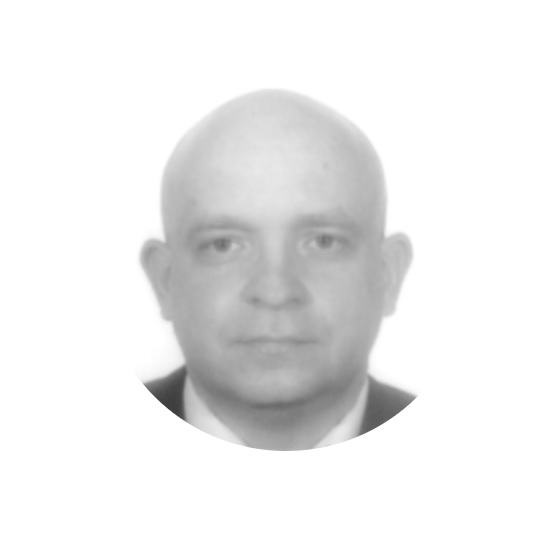Piotr Sender
@pg.edu.pl
Faculty of Mechanical Engineering and Shipbuilding
Gdansk University of Technology
EDUCATION
Barcelona University of Technology
Gdansk University of Technology
Warsaw University of Technology
Wroclaw University of Technology
RESEARCH, TEACHING, or OTHER INTERESTS
Industrial and Manufacturing Engineering
Scopus Publications
Scholar Citations
Scholar h-index
Scopus Publications
Piotr Sender, Irene Buj-Corral, and Jesús Álvarez-Flórez
MDPI AG
In this work, the analysis of the acoustic emission (AE) signal in grinding processes is addressed. The proposed analysis method decomposes the acoustic signal into three frequency ranges. The total energy of each range is determined, as well as the highest frequency. Different grinding experiments were carried out, according to a full factorial design of experiments (DOE), in which feed speed, depth of cut, and transversal step (table cross feed) were varied. Arithmetic average roughness Ra and the material removal rate (MRR) were determined. It was observed that Ra depends mainly on the transversal step, followed by feed speed and the interaction between the transversal step and depth of cut, while MRR is greatly influenced by the transversal step. According to multi-objective optimization with the Derringer–Suich function, in order to simultaneously minimize Ra and maximize MRR, a transversal step of 9 mm per longitudinal pass, feed speed of 20 m/min, and depth of cut of 0.020 mm should be selected.
Irene Buj-Corral, Piotr Sender, and Carmelo J. Luis-Pérez
Elsevier BV
Irene Buj-Corral, Piotr Sender, and Carmelo J. Luis-Pérez
MDPI AG
Honing processes are abrasive machining processes which are commonly employed to improve the surface of manufactured parts such as hydraulic or combustion engine cylinders. These processes can be employed to obtain a cross-hatched pattern on the internal surfaces of cylinders. In this present study, fuzzy artificial neural networks are employed for modeling surface roughness parameters obtained in finishing honing operations. As a general trend, main factors influencing roughness parameters are grain size and pressure. Mean spacing between profile peaks at the mean line parameter, on the contrary, depends mainly on tangential and linear velocity. Grain Size of 30 and pressure of 600 N/cm2 lead to the highest values of core roughness (Rk) and reduced valley depth (Rvk), which were 1.741 µm and 0.884 µm, respectively. On the other hand, the maximum peak-to-valley roughness parameter (Rz) so obtained was 4.44 µm, which is close to the maximum value of 4.47 µm. On the other hand, values of the grain size equal to 14 and density equal to 20, along with pressure 600 N/cm2 and both tangential and linear speed of 20 m/min and 40 m/min, respectively, lead to the minimum values of core roughness, reduced peak height (Rpk), reduced valley depth and maximum peak-to-valley height of the profile within a sampling length, which were, respectively, 0.141 µm, 0.065 µm, 0.142 µm, and 0.584 µm.
Piotr Sender and Irene Buj-Corral
MDPI AG
The article presents a literature review dealing with the effect of the honing parameters on the quality of the machined parts, as well as with the recent innovations in honing processes. First, an overview about the honing and the plateau-honing processes is presented, considering the main parameters that can be varied during machining. Then, the influence of the honing parameters on surface finish, shape deviation and material removal rate is presented. Finally, some special and innovative applications of the honing process are described. For example, honing with variable kinematics allows obtaining oil grooves that are not rectilinear but curvilinear, in order to reduce the temperature of the part during machining and thus achieving better surface finish and lower shape deviation. Automation of the honing machines is useful to improve both the production and the verification process. Another innovation consists of using 3D printed tools in honing processes, which will help to obtain abrasive tools with complex shapes, for example by means of powder bed fusion processes.
Adam Barylski and Piotr Sender
MDPI AG
Honing of holes allows for small shape deviation and a low value of a roughness profile parameter, e.g., Ra parameter. The honing process heats the workpiece and raises its temperature. The increase in temperature causes thermal deformations of the honed holes. The article proposes the construction of a honing cell, containing in addition to CNC honing machine: thermographic camera, sound intensity meter, and software for collecting and analyzing data received during machining. It was proposed that the level of sound intensity obtained during honing could be monitored continuously and that the images from a thermographic camera could be analyzed on-line. These analyses would be aimed at supervising honing along with the on-line correction of machining parameters. In addition to the oil cooler, the machining cell may have an automatic selection of the grain trajectory shape, with specified value of the radii of curvature of the abrasive grain trajectories, according to the wall thickness of the honed workpiece, which will result in reducing the temperature generated during honing. Automated honing cell can mostly increase honing process efficiency. Simulations in FlexSim showed the possibility of increasing the efficiency of the honing process more than 20 times.
Piotr Grzegorz Sender
Springer International Publishing
Mariusz Deja, Mieczysław Siemiątkowski, and P. Sender
Walter de Gruyter GmbH
Abstract The focus of this paper is on process planning for large parts manufacture in systems of definite process capabilities, involving the use of multi-axis machining centres. The analysis of machining heavy mechanical components used in off-shore constructions has been carried out. Setup concepts applied and operation sequences determined in related process plans underwent studies. The paper presents in particular a reasoning approach to setup sequencing and machine assignment in manufacturing large-size components of offshore constructions. The relevant reasoning mechanism within a decision making scheme on generated process plan is shown based on a case study derived from the offshore sector. Recommendations for manufacture of selected exemplary and typical parts were formulated.

